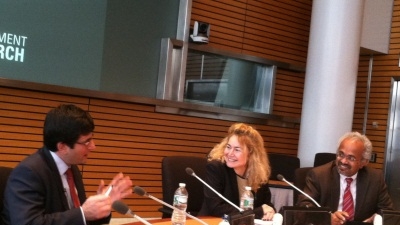Rates of global migration remain at historically low levels, with migrants making up less than 3 percent of the world’s population according to the latest available data. These low rates persist despite the substantial benefits that accrue both to migrants in the form of higher wages and to recipient countries in the form of new jobs and increases in economy-wide productivity.
These findings, presented by economist Çağlar Özden at a Policy Research Talk held earlier this month at the World Bank, are based on new datasets that have for the first time allowed a comprehensive picture of bilateral global migration over the last half of the twentieth century. These include the Global Bilateral Migration Database, covering total numbers of migrants in 226 countries and regions of the world, and the Global Skilled Migration Database, which tracks patterns of migration along with data on the level of migrants’ education.
Between 1960 and 2000, the total number of migrants increased from 92 million to 165 million, but the overall share of migrants in the world’s population hovered around 2.5 percent. The demographics of the migrant population changed over this period, however, with the biggest increase among college-educated female migrants. The data also show that South-North migration grew the most among all corridors between 1960 and 2000, increasing by 55 percent. And just four countries—the United States, Canada, Australia, and the United Kingdom—attracted 65 percent of high-skilled immigrants from around the globe.
“Migration is leading to a lot of policy questions,” said World Bank Research Director Asli Demirguc-Kunt, who hosted the event. “There are issues both for migrant-sending countries and for receiving countries. With the recent focus on jobs and job creation, this makes migration the most contentious component of globalization.”
The main benefit of migration accrues to migrants in the form of higher wages and career opportunities. Real wages between developed and developing countries can vary between 4 and 10 times depending on the migrant’s occupation, education, and location. However, recent research has produced surprising results that have overturned common beliefs about migration’s impact in labor markets in destination countries. Özden explained that immigration has had a positive effect on the wages of less-educated locals in OECD countries. Furthermore, in many of these countries emigration has mattered more than immigration in its impact on wages, with the departure of skilled workers hurting the incomes of less-educated locals.

